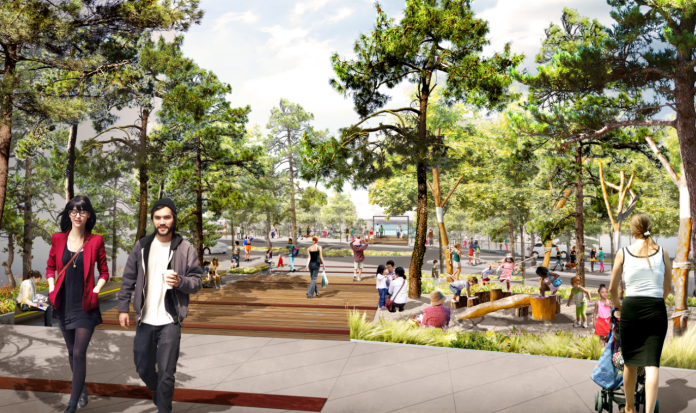
The switch represents a broader trend of abandoning plans for people-centered spaces in Belltown in the Waterfront Seattle project.
Seattle City Light is moving forward with plans to build a six stall surface parking lot for electric vehicle users to charge, just blocks from Pike Place Market in Belltown at the corner of Western Avenue and Blanchard Street. In May, The Urbanist reported that the parcel selected to accommodate the new surface lot, a wedge-shaped spot that had been part of the overall Waterfront Seattle redevelopment project, had previously been presented to community groups in Belltown years ago as an “opportunity site” that could become a future neighborhood asset: a new park or piece of open space in a neighborhood severely in need of those amenities.
While most of the attention around the redevelopment of Seattle’s waterfront has been understandably focused on the main Alaskan Way corridor between Colman Dock and Pike Place Market, significant opportunities for Belltown have been included in the plans since the project launched in 2010. Even as plans to create a new four-lane roadway through the middle of the neighborhood, intended to benefit freight traffic, moved forward, there were also numerous places where Belltown could see new parks or open space. Compared to other urban centers in Seattle, Belltown has a relative lack of open space per capita, and the Waterfront Seattle project offered an opportunity to improve that. However, as plans became realized, those opportunities began to vanish.
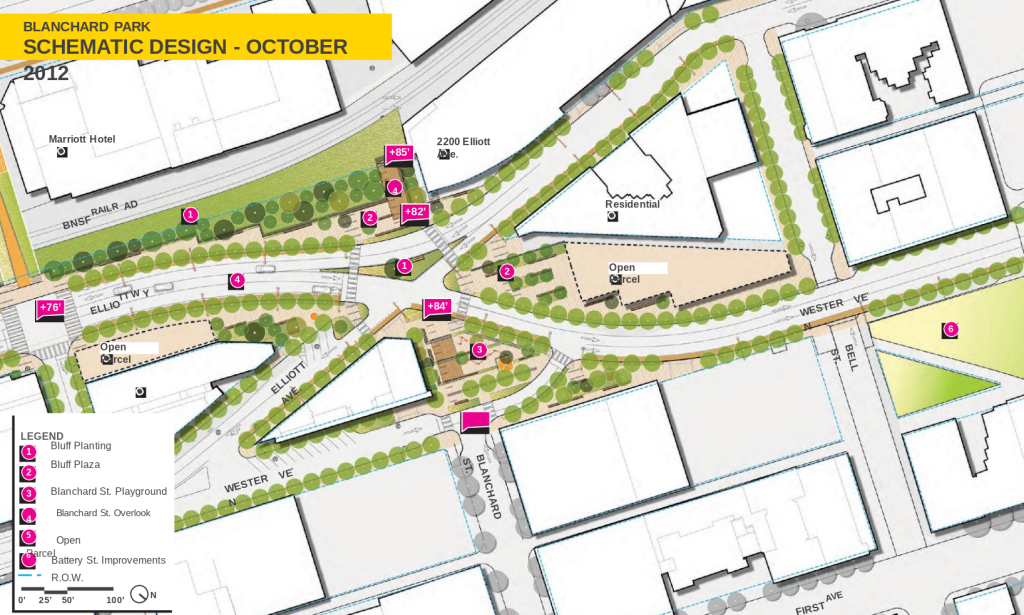
Central to these plans for park space in Belltown was this Western and Blanchard parcel. Records obtained by The Urbanist show that plans were drawn up envisioning the “Blanchard Park” as a new neighborhood playground for Belltown, with Blanchard Street envisioned as being converted to a fully pedestrianized block. Early designs for the park were presented to the city in the spring of 2014 by James Corner Field Operations, which was leading the design work around Seattle’s waterfront. Fresh off New York City’s High Line park, securing the firm had been a high profile win for the city.
“In James Corner we have selected a design firm that truly understands how to create dramatic public spaces where people want to gather,” Christopher Williams, Seattle’s acting parks superintendent said in 2010 when the contract was announced.
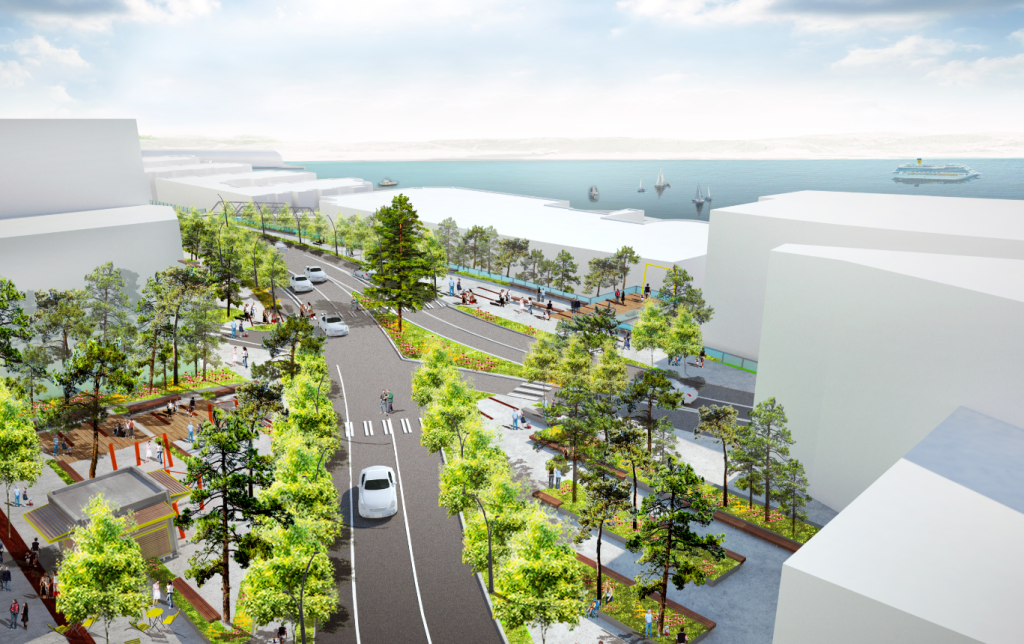
Between 2010 and 2014, the concept was developed for what was dubbed the Belltown X, the spot where the new Elliott Way will intersect with existing Elliott Avenue right at Blanchard Street. But with a new freight-focused street at the center of the project area, the Waterfront Seattle team was cognizant of creating public space that would go underutilized.
“A concern is creating public spaces with no natural constituency that will invite public safety challenges,” a planner wrote in notes for the project at 30% design. “There are way too many benches in this area for the likely usage. In some cases it’s not clear why anyone would want to sit on a bench and watch trucks roar by ten feet away. Benches should generally be kept in the Blanchard corridor, where there is some grade and views of the bay and mountains. Benches should be removed from the area north of where Western and Elliott Way meet. The ‘development opportunity’ site should be made larger, leaving a 14-16′ sidewalk.”
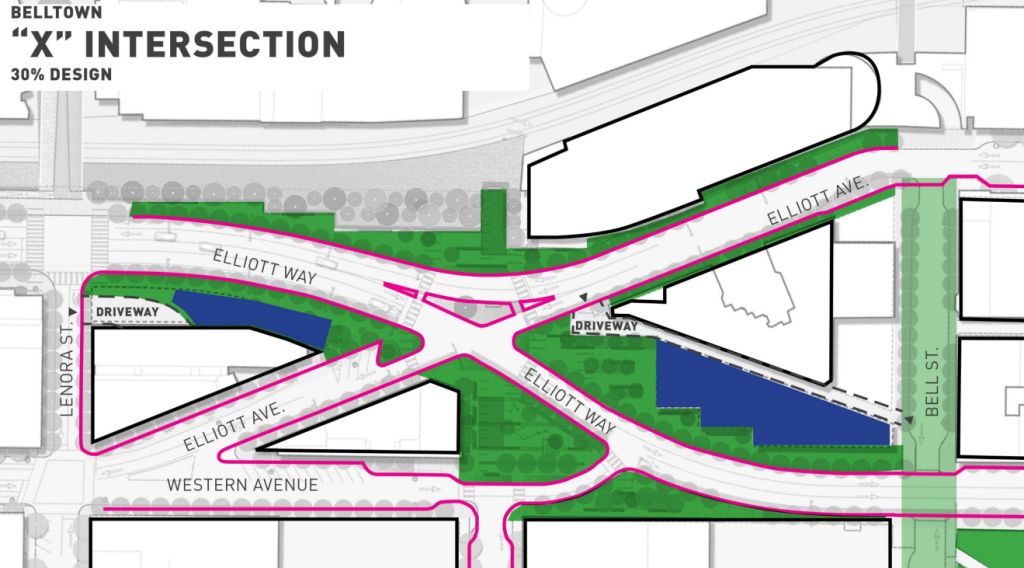
By 2014, that site had been made larger, by rerouting planned Elliott Way slightly further to the west near the site. That shift of the roadway eliminated the possibility of developing the parcel on the north side of the X (above, the blue space to the right) that would instead be turned into a planted slope. But it nearly doubled the developable potential of the site, from 12,000 square feet to over 25,000 square feet.
That 25,000 square feet included the portion of Blanchard Street between Elliott and Western, which was proposed to be converted to a pedestrian corridor across Elliott Way to a new “Blanchard Overlook” that would provide another piece of public space where visitors could stop and look out over the waterfront.
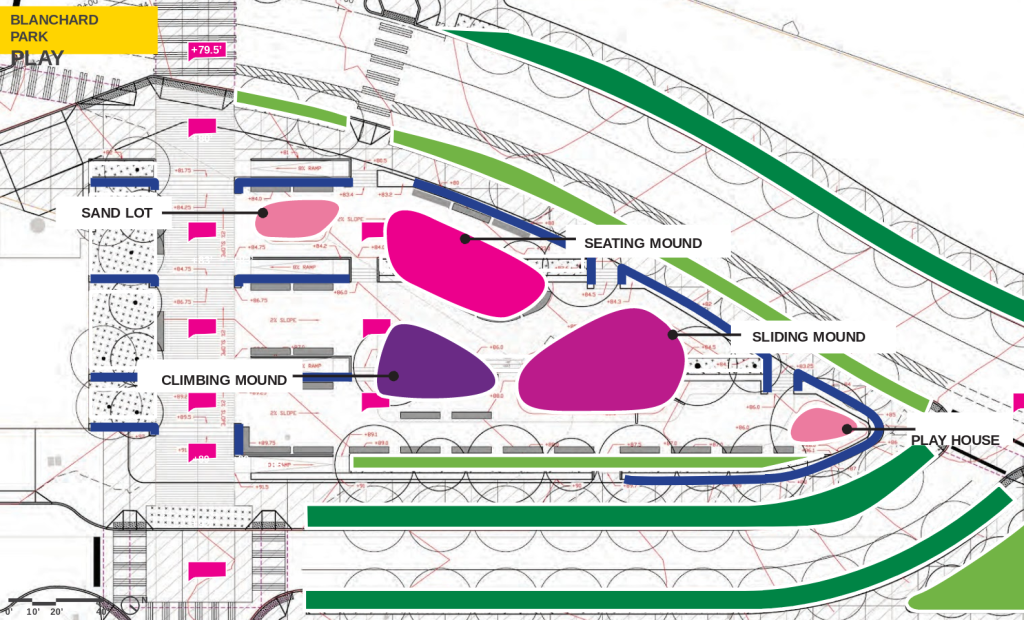
But the Blanchard Overlook was one of the first things to be eliminated from the Belltown X in 2014 as the project ran into problems extending onto BNSF railroad right of way below the bluff and WSDOT refused to reimburse the city for any costs related to it, only the roadway and sidewalk. The concept could have moved forward separately, but by 2017 as Waterfront Seattle reached 90% design, it was no longer included.
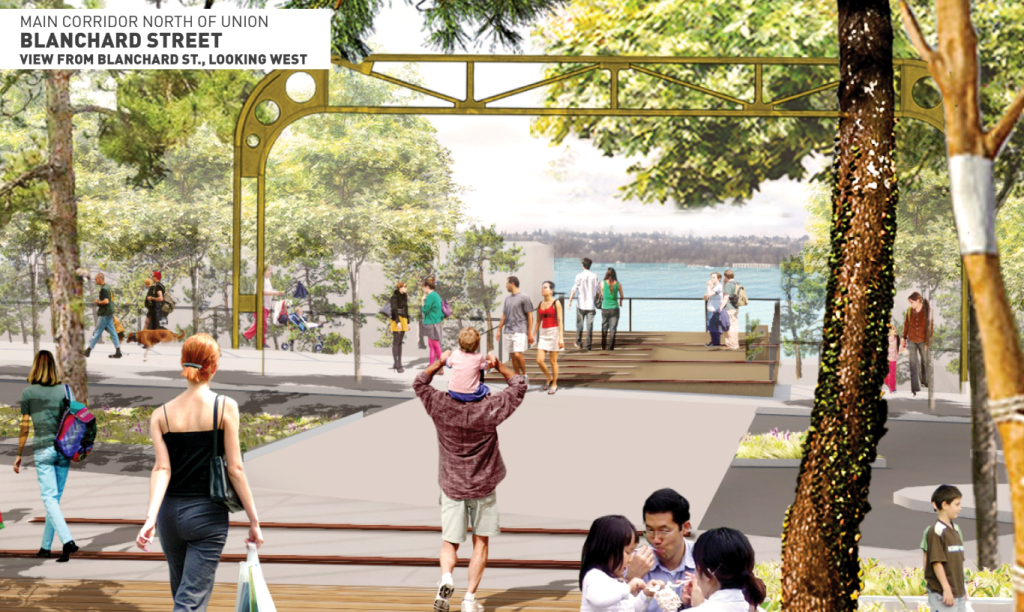
Yet the Blanchard Park space is still there, waiting to be utilized. So how did it end up becoming a proposed surface parking lot for EV charging, under Seattle City Light’s control? Clues come from a 2020 parking study conducted on the waterfront corridor, in which the City developed the idea of using the Blanchard property for parking, either off-street or on the Blanchard right-of-way itself. However, City Light did not become involved until the issue of another piece of property that the utility currently owns nearby arose.
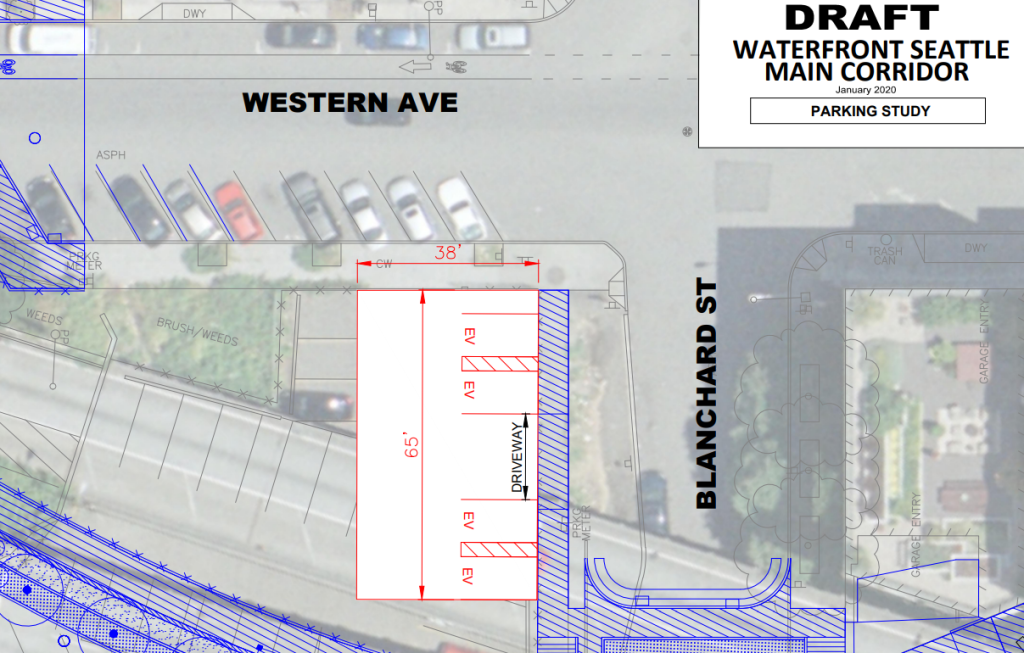
“Seattle City Light did not play an active role in the development of the overall Waterfront redevelopment project,” Jenn Strang, media relations manager for Seattle City Light wrote to me via email. “As the Waterfront’s vision developed, we assisted in how it would integrate with new and existing infrastructure. We have long considered the Belltown community as a potential candidate for an EV charging installation. This particular site had not been under consideration until recently.”
“For several years, The City of Seattle, through its Waterfront redevelopment project, has expressed interest in acquiring City Light’s former substation near Battery St. and Western Avenue in order to consolidate the land there for future use as a public amenity,” Strang continued. “City Light had considered the former substation site as possible location for a future EV charging station. As part of a potential land swap agreement, City Light was offered the Blanchard property which had previously been part of the viaduct system. The Blanchard property, through the Waterfront redevelopment project, provided an opportunity for City Light to consider an EV charging site in the Belltown community that did not interfere with the potential consolidation of the Battery Street property. It was at that time we began to consider the site in earnest for an EV charging site.”
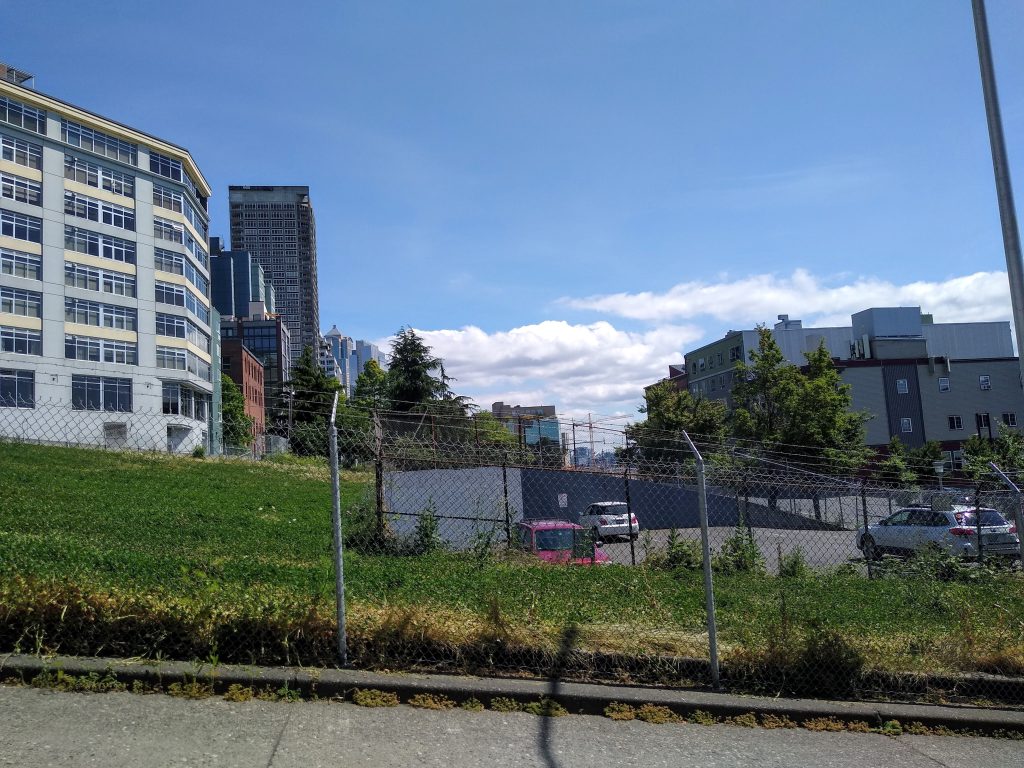
That public amenity had long been considered to be a future public park, on the former Battery Street tunnel portal site, and renderings were shown to Belltown neighborhood groups in 2014 depicting park use. The former City Light substation occupies a tiny corner of the site, most of which is now covered in grass. But in 2021, the Durkan administration announced that it had signed a letter of intent with Seattle Public Schools that would lock that site in amber, maintained at the City’s expense, for the District to potentially develop as a new Downtown school.
Under that agreement, the district has until 2031 to make moves to develop the site, and the City is required to make that City Light property available to the District. That school site is intended to include a public park component but on a minority of the site, and the 2031 date could end up getting extended if both the City and the District agree to a delay.

The question is whether developing the Blanchard Park site as an EV charging station is the right decision, or whether City Light should simply surplus the Battery Street property. As it stands, the promises made to Belltown that have been broken or changed over the past decade have been stacking up, with a small park at the Battery Street Portal site sometime in the 2030s essentially all that’s left on the table right now for the neighborhood.
I asked Strang of City Light whether enough outreach had been done on the Blanchard Site to solidify plans for a surface parking lot, given the past concepts. “We recognize the importance of this area to the Belltown community,” she wrote. “We have engaged with stakeholder groups in the past and are open to continuing to grow and develop these relationships as the project progresses. Our outreach to date has included direct mailers with project information and a request for feedback sent to 3,226 nearby mailing addresses, a project web page with an online survey for feedback, and engagement with two ride hail groups with active stakeholders in the area.”
A survey that City Light completed earlier this year, however, only had 56 people respond to it. And City Light’s interest in the property is very narrow, with no broader outreach around how the site, promised to the community as public space for years, could be used differently.
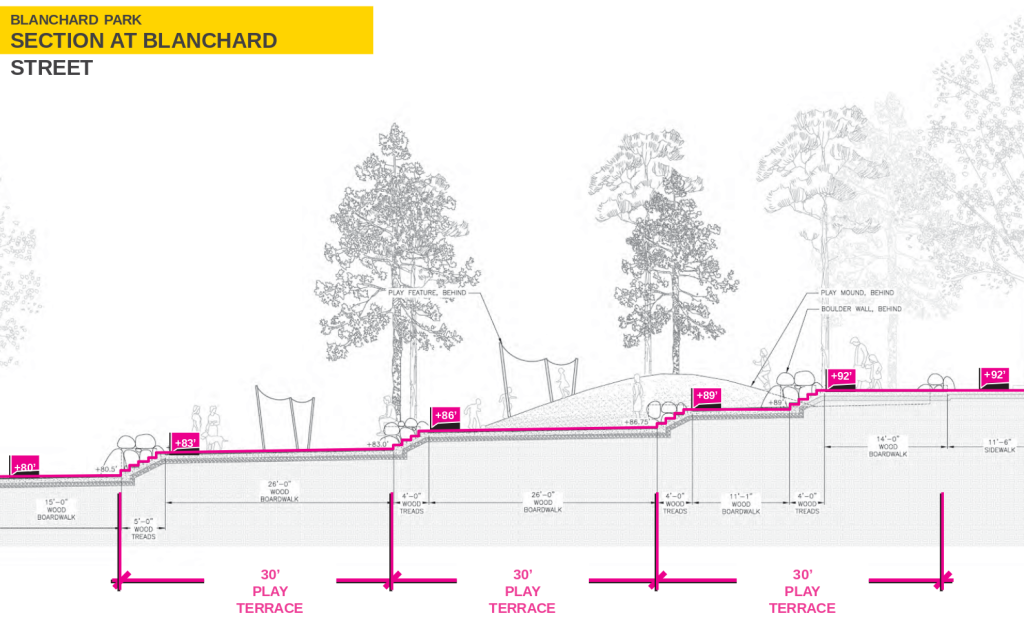
A park or surface parking lot are not the only two uses that have been considered for the site. In 2014, the City looked at the possibility of utilizing the site as housing. The study found that 65 condo market rate units could be developed on the site across seven stories under the current zoning at the time, and it did not delve into whether the city could maximize the number of affordable units by partnering with an affordable housing developer.
Since that analysis was done, the city has ramped up its policies around utilizing surplus lands for affordable housing. Earlier this year, the city opened 16 family sized units in the Central District on land that had been deemed surplus. This is not to say housing would be the best use for the Blanchard Park property, but it would certainly another use for the space that’s in alignment with the City’s goals.
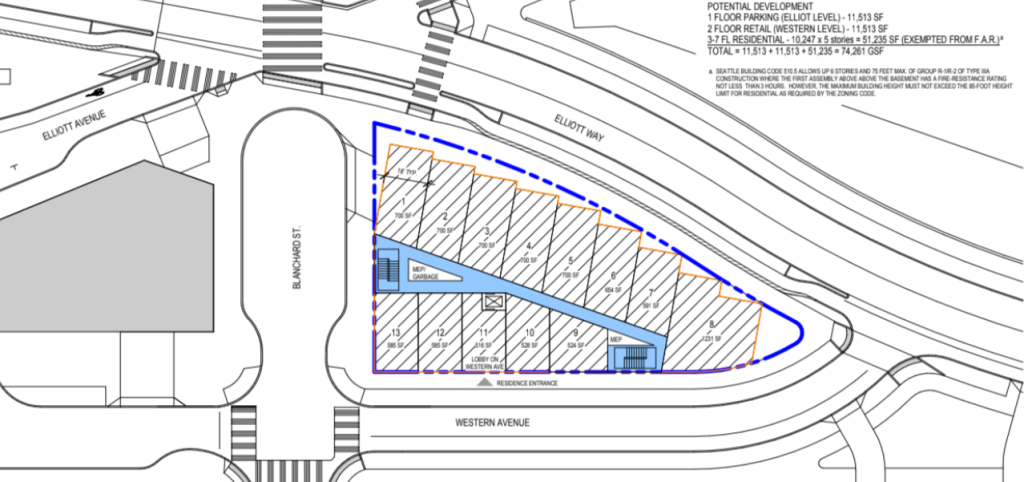
Belltown is not the only place where Waterfront Seattle was dramatically scaled back due to cost and lack of feasibility. Many of the concepts developed through the work the city produced with James Corner’s firm ended up on the cutting room floor. Among them, perhaps most famously was the idea of constructing a floating swimming pool barge in Elliott Bay, a proposal that had been modeled a similar concept that was tried in New York City. In 2014, the barge idea was cut from the proposal for the new waterfront as the overall project faced delays due to WSDOT’s problems with the SR 99 tunnel and the financing plan for the waterfront remained murky.
Elsewhere on the waterfront, space that was proposed to be converted toward people-centric uses has been instead turned toward space for vehicles and vehicle charging. Early in Waterfront Seattle, plans were developed to convert the stretch of Seneca Street between Western Avenue and Alaskan Way as a pedestrianized block in the style of Occidental Square. This was envisioned as connecting to a new pedestrian bridge up to 1st Avenue where the now-demolished viaduct ramp once stood. A new bridge was likely always on the pool barge end of the spectrum, but a pedestrian street still could have been created on the first block.
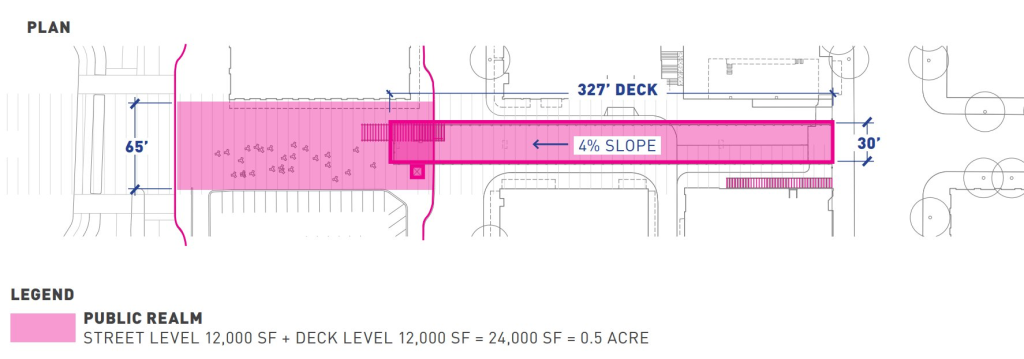
By 2014, however, Seneca Street had been turned back into a street for vehicles, with the Seattle Department of Transportation taking over development of the space. Just this year, the city is installing electric vehicle chargers at the back-in parking spaces that were once envisioned as pedestrian space, even as the Office of the Waterfront touts the “pedestrian friendly curbless sidewalk” that now occupies a small portion of the street.
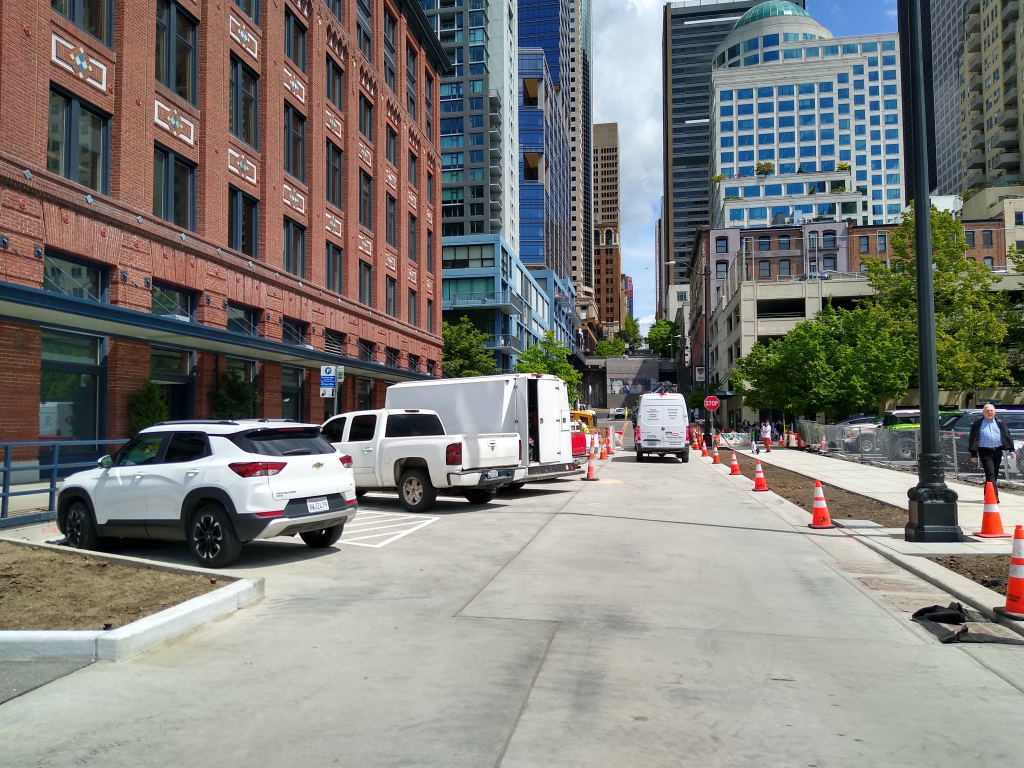
I asked the Office of the Waterfront, which has been shepherding the full redevelopment forward for over a decade, about the cancelled plans for a park at Blanchard Street.
“There were countless ideas and concepts developed as part of the overall Waterfront Program in the early years of planning work,” Iris Picat, a consultant working for the Office of the Waterfront said. “Our designers were told to ‘dream big’ on the development of options for consideration, knowing that at some point, the City would need to hone in on scope ideas that were reasonable, desirable, affordable, and maintainable. At the end of the day, the City, working with the community at that time, chose to focus efforts on the ‘Bell St Improvements Project’ (which will begin design later this year) in the Belltown community. The Battery Street portal site isn’t within the scope of the Waterfront program.”
Meanwhile City Light is moving forward with its EV charging station plans for the Blanchard Park site. Without a clear alternative vision for the site coming from elsewhere at the City, the property looks poised to become a surface parking lot and its potential as a neighborhood playground relegated to the annals of Seattle history.
Ryan Packer has been writing for The Urbanist since 2015, and currently reports full-time as Contributing Editor. Their beats are transportation, land use, public space, traffic safety, and obscure community meetings. Packer has also reported for other regional outlets including BikePortland, Seattle Met, and PubliCola. They live in the Capitol Hill neighborhood of Seattle.

